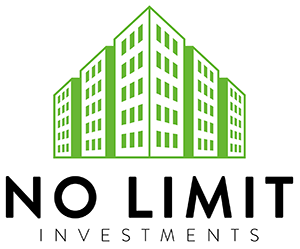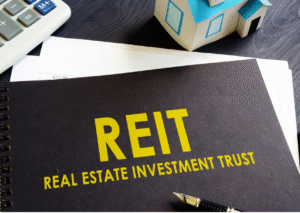What Is Private Real Estate Lending?
Private real estate lending refers to the practice of individuals or private institutions providing loans for property investments instead of traditional banks or government-backed entities. Unlike conventional mortgages, private lending often emphasizes the value of the property and the strength of the deal over the borrower’s credit score. This makes it especially attractive for real estate investors who need flexible and fast access to capital.
Private lenders typically offer short- to medium-term financing, often for investment purposes such as fix and flip projects, rental properties, or new construction deals. The appeal lies in the speed of funding and the ability to tailor terms to unique investment strategies that traditional lenders might overlook.
How Does Private Real Estate Lending Differ from Traditional Bank Loans?
Traditional banks have strict underwriting requirements. Borrowers must provide detailed documentation, meet high credit standards, and endure lengthy approval processes. This can make it difficult for investors who need quick financing to secure a property deal.
Private lenders, on the other hand, prioritize:
- Asset-based lending: Loan decisions are made primarily on the property’s value and potential.
- Faster approvals: Investors can secure funding in days instead of weeks or months.
- Flexible underwriting: Private lenders may adjust terms to align with specific strategies such as short-term renovations or portfolio expansions.
This flexibility makes private lending an essential tool for investors who want to stay competitive in today’s real estate market.
What Are the Common Types of Private Real Estate Lending?
Private real estate lending takes several forms, each tailored to different investment strategies:
- Fix & Flip Loans: Designed for investors purchasing distressed properties, renovating them, and selling for profit.
- Buy & Hold Mortgages: Long-term loans for investors who want to keep properties as rentals.
- BRRRR Financing: A strategy that combines Buy, Rehab, Rent, Refinance, and Repeat to scale a portfolio.
- Cash-Out Refinance: Allows investors to tap into the equity of existing properties to fund new projects.
- DSCR Loans (Debt Service Coverage Ratio): Tailored for rental property investors, these loans focus on the property’s income potential rather than the borrower’s personal income.
- New Construction Loans: Provide capital for building properties from the ground up.
Each type of loan empowers investors to match financing to their chosen investment approach.
Why Do Investors Choose Private Real Estate Lending?
Investors often turn to private lending because of its unique advantages:
- Speed: Funding can be approved quickly, helping investors close deals before competitors.
- Accessibility: Private lenders often consider factors beyond credit history.
- Flexibility: Loan terms can be negotiated to fit specific project needs.
- Opportunity: Enables investors to take on projects that traditional lenders may deem too risky.
For real estate professionals navigating competitive markets, these benefits can mean the difference between securing a deal and losing it.
What Are the Risks of Private Real Estate Lending?
While private lending is advantageous, investors should carefully weigh the risks:
- Higher interest rates: Private loans often come with higher rates compared to conventional mortgages.
- Shorter repayment terms: Many private loans are structured for short durations, which can create repayment pressure.
- Collateral requirements: Because the property is the primary security, default can mean losing the investment.
Mitigating these risks involves careful planning, accurate property evaluations, and partnering with experienced lenders who understand real estate dynamics.
How Can Private Real Estate Lending Support Different Investment Strategies?
Private lending is adaptable, supporting multiple strategies in the real estate space:
- House flipping: Quick access to fix & flip loans allows investors to move fast on distressed properties.
- Portfolio growth: Buy & hold mortgages and BRRRR financing help investors steadily expand rental holdings.
- Cash flow management: DSCR loans align repayment obligations with rental income streams.
- Expansion through equity: Cash-out refinancing allows investors to unlock funds for scaling operations.
- Ground-up development: New construction loans give investors the capital to create value from undeveloped land.
By aligning the right type of financing with a clear strategy, investors maximize both growth and profitability.
How Does Private Real Estate Lending Benefit the Overall Market?
Private real estate lending plays a vital role in strengthening housing markets and local economies. Investors funded through private loans often purchase neglected or distressed properties, renovate them, and bring them back into productive use. This process not only improves neighborhoods but also increases property values and creates housing opportunities.
Additionally, private lenders help bridge the gap when banks are unable or unwilling to fund certain projects. By doing so, they ensure that innovative real estate ventures and community developments can still move forward.
How Can Investors Get Started with Private Real Estate Lending?
Investors interested in private lending should begin by:
- Clarifying their strategy: Decide whether they want to flip, hold, refinance, or build.
- Calculating potential returns: Understand projected costs, after-repair value (ARV), and rental cash flow.
- Researching lenders: Seek partners who specialize in real estate financing solutions and who understand unique investor needs.
- Preparing documentation: Even though requirements are flexible, investors should present property valuations, exit strategies, and clear financial goals.
Starting with an experienced lending partner ensures the process is smoother, safer, and more profitable.
Where Can Investors Find Reliable Private Real Estate Lending Solutions?
For investors seeking trustworthy private real estate lending, No Limit Investments provides a full suite of financing solutions, including:
- Fix & flip loans
- Buy & hold mortgages
- BRRRR financing
- Cash-out refinance
- DSCR loans
- New construction loans
- Comprehensive real estate financing solutions
These services are tailored to empower investors at every stage of their journey, whether they are acquiring their first rental property, scaling a portfolio, or funding a major development.
Why Should Investors Act Now?

Real estate markets are competitive, and opportunities often go to those who can act quickly. With private real estate lending solutions from No Limit Investments, investors gain access to the flexibility, speed, and strategic financing they need to close deals with confidence.
Whether you are looking to flip, refinance, or expand your rental portfolio, now is the time to explore private lending options that align with your goals. Don’t wait for opportunities to pass you by, partner with No Limit Investments and take decisive action today. Cal now!
Final Thoughts
Private real estate lending has become an indispensable tool for investors seeking to move quickly, scale portfolios, and capitalize on opportunities that traditional banks may not support. By understanding how it works, its benefits, and its risks, investors can position themselves to make smarter, more strategic decisions.
With trusted partners like No Limit Investments, private lending becomes more than just funding, it becomes the foundation for long-term success in real estate.
Works Cited
- “Private Money Lending: What You Need to Know.” U.S. Securities and Exchange Commission, www.sec.gov/oiea/investor-alerts-and-bulletins/ib_privatelending. Accessed 20 Sept. 2025.
- “Real Estate Financing: Types of Loans and How They Work.” Consumer Financial Protection Bureau, www.consumerfinance.gov/ask-cfpb/what-is-real-estate-financing-en-2092/. Accessed 20 Sept. 2025.
- Devaney, Thomas M. “Private Lending and Its Role in Real Estate Investment.” Journal of Real Estate Research, vol. 42, no. 3, 2020, pp. 411–427.
- U.S. Department of Housing and Urban Development. “Rehab and Renovation Programs.” HUD.gov, www.hud.gov/program_offices/housing/sfh/rehab. Accessed 20 Sept. 2025.
Frequently Asked Questions
- What is the main advantage of private real estate lending compared to bank loans?
The biggest advantage is flexibility. Private lenders focus more on the property’s value and investment potential than on strict borrower qualifications. This means faster approvals and customized terms that fit specific investment strategies. - Can private real estate lending be used for rental properties?
Yes. Investors often use products like buy & hold mortgages and DSCR loans through private lenders to acquire or refinance rental properties. These options make it easier to expand a portfolio without the rigid income verification banks require. - What types of loans are available through private real estate lending?
Common options include fix & flip loans, buy & hold mortgages, BRRRR financing, cash-out refinance, DSCR loans, and new construction loans. Each type is designed to support different investment goals, from flipping homes to scaling rental portfolios. - Are the interest rates higher with private real estate lending?
In many cases, yes. Because private lenders take on more risk and provide faster funding, interest rates are usually higher than those from traditional banks. However, investors value the speed, accessibility, and tailored terms that outweigh the extra cost. - How do I get started with private real estate lending?
Start by defining your investment strategy, preparing basic property information, and researching trusted lenders. A reliable partner like No Limit Investments can guide you through the process and match you with the right financing solution for your goals.







